Biohybrids for Combined Therapies of Skin Wounds: Agglomerates of Mesenchymal Stem Cells with Gelatin Hydrogel Beads Delivering Phages and Basic Fibroblast Growth Factor
Abstract
:1. Introduction
2. Results and Discussion
2.1. Propagation of the Target Bacteria (E. coli) and Its T4 Phages
2.2. Production of Gelatin-Based Hydrogel Microbeads
2.3. Phage and bFGF Release from the GEL Beads
2.4. Agglomerates of MSCs with or without GEL Beads
2.5. Cell Counts and Metabolic Activities
3. Conclusions
4. Materials and Methods
4.1. Materials
4.2. Propagation of the Target Bacteria and Phages
4.3. Production and Characterization of the Gelatin-Based Hydrogel Microbeads
4.4. Phage and bFGF Loading and Release within and from the GEL Beads
4.5. Mesenchymal Stem Cells and Their Agglomerates
4.5.1. Isolation and Culture of MSCs
4.5.2. Formation of Agglomerates of MSCs with or without the GEL Beads
4.5.3. Following the Changes in Cell Counts and Metabolic Activities
4.6. Statistical Analysis
Author Contributions
Funding
Institutional Review Board Statement
Informed Consent Statement
Data Availability Statement
Acknowledgments
Conflicts of Interest
References
- Lukomskyj, A.O.; Rao, N.; Yan, L.; Pye, J.S.; Li, H.; Wang, B.; Li, J.J. Stem Cell-Based Tissue Engineering for the Treatment of Burnd Wounds: A Systematic Review. Stem Cell Rev. Rep. 2022, 18, 1926. [Google Scholar] [CrossRef] [PubMed]
- Elfawy, L.A.; Ng, C.Y.; Amirrah, I.N.; Mazlan, Z.; Wen, A.P.Y.; Fadilah, N.I.M.; Maarof, M.; Lokanathan, Y.; Fauzi, M.B. Sustainable Approach of Functional Biomaterials—Tissue Engineering for Skin Burn Treatment: A Comprehensive Review. Pharmaceuticals 2023, 16, 701. [Google Scholar] [CrossRef] [PubMed]
- Jorgensen, A.M.; Mahajan, N.; Atala, A.; Murphy, S.V. Advances in Skin Tssue Engineering and Regenerative Medicine. J. Burn. Care Res. 2023, 44, 33. [Google Scholar] [CrossRef] [PubMed]
- Price, R. O’Neill report on Antimicrobial Resistance: Funding for Antimicrobial Specialists Should be Improved. Eur. J. Hosp. Pharm. 2016, 23, 245. [Google Scholar] [CrossRef] [PubMed]
- Ferri, M.; Ranucci, E.; Romagnoli, P.; Giaccone, V. Antimicrobial Resistance: A Global Emerging Threat to Public Health Systems. Crit. Rev. Food Sci. Nutr. 2017, 57, 2857. [Google Scholar] [CrossRef]
- Dhingra, S.; Rahman, N.A.A.; Peile, E.; Rahman, M.; Sartelli, M.; Hassali, M.A.; Islam, T.; Islam, S.; Haque, M. Microbial Resistance Movements: An Overview of Global Public Health Threats Posed by Antimicrobial Resistance, and How Best to Counter. Front. Public Health 2020, 8, 535668. [Google Scholar] [CrossRef] [PubMed]
- World Health Organization. Global Antimicrobial Resistance and Use Surveillance System (GLASS) Report 2021; WHO: Geneva, Switzerland, 2021. [Google Scholar]
- Pirisi, A. Phage Therapy—Advantages over Antibiotics. Lancet 2000, 356, 1418. [Google Scholar] [CrossRef] [PubMed]
- Matsuzaki, S.; Uchiyama, J.; Takemura-Uchiyama, I.; Daibata, M. Perspective: The Age of the Phage. Nature 2014, 509, 7498. [Google Scholar] [CrossRef] [PubMed]
- Hesse, S.; Adhya, S. Phage therapy in the Twenty-First Century: Facing the Decline of the Antibiotic Era; is the Time for the Age of the Phage? Annu. Rev. Microbiol. 2019, 73, 155. [Google Scholar] [CrossRef]
- Luong, T.; Salabarria, A.C.; Edwards, R.A.; Roach, D.R. Standardized Bacteriophage Purification for Personalized Phage Therapy. Nat. Protoc. 2020, 15, 2867. [Google Scholar] [CrossRef]
- Pirnay, J.P. Phage Therapy in the Year 2035. Front. Microbiol. 2020, 3, 11. [Google Scholar] [CrossRef] [PubMed]
- Royer, S.; Morais, A.P.; da Fonseca Batistão, D.W. Phage Therapy as Strategy to Face Post-Antibiotic Era: A Guiede to Beginners and Experts. Arch. Microbiol. 2021, 203, 1271. [Google Scholar] [CrossRef] [PubMed]
- Hatfull, G.F.; Dedrick, R.M.; Schooley, R.T. Phage Therapy for Antibiotic-Resistant Bacterial Infections. Annu. Rev. Med. 2022, 73, 197. [Google Scholar] [CrossRef] [PubMed]
- Anyaegbunam, N.J.; Anekpo, C.C.; Anyaegbunam, Z.K.G.; Doowuese, Y.; Chinaka, C.B.; Odo, O.J.; Sharndama, H.C.; Okeke, O.P.; Mba, I.E. The resurgence of Phage-Based Therapy in the Era of Increasing Antibiotic Resistance: From Research Progress to Challenges and Prospects. Microbiol. Res. 2022, 64, 127155. [Google Scholar] [CrossRef] [PubMed]
- Ioannou, P.; Baliou, S.; Samonis, G. Bacteriophages in Infectious Diseases and Beyond-a Narrative Review. Antibiotics 2023, 12, 1012. [Google Scholar] [CrossRef] [PubMed]
- Gospodarowicz, D.; Ferrara, N.; Schweigerer, L.; Neufeld, G. Structural Characterization and Biological Functions of Fibroblast Growth Factor. Endocr. Rev. 1987, 8, 95. [Google Scholar] [CrossRef]
- Tabata, Y.; Nagano, A.; Ikada, Y. Biodegredation of Hydrogel Carrier Incorporating Fibroblast Growth Factor. Tissue Eng. 1999, 5, 127. [Google Scholar] [CrossRef] [PubMed]
- Nunes, Q.M.; Li, Y.; Sun, C.; Kinnunen, T.K.; Fernig, D.G. Fibroblast Growth Factors as Tssue Repair and Regeneration Therapeutics. PeerJ 2016, 12, e1535. [Google Scholar] [CrossRef] [PubMed]
- Park, J.W.; Hwang, S.R.; Yoon, I.S. Advanced Growth Factor Delivery Systems in Wound Management and Skin Regeneration. Molecules 2017, 22, 1259. [Google Scholar] [CrossRef]
- Caballero Aguilar, L.M.; Silva, S.M.; Moulton, S.E. Growth Factor Delivery: Defining the Next Generation Platforms for Tissue Engineering. J. Control. Release 2019, 306, 40. [Google Scholar] [CrossRef]
- Abdelhakim, M.; Lin, X.; Ogawa, R. The Japanese Experience with Basic Fibroblast Growth Factor in Cutaneous Wound Management and Scar Prevention: A Systematic Review of Clinical and Biological Aspects. Dermatol. Ther. 2020, 10, 569. [Google Scholar] [CrossRef] [PubMed]
- Buie, T.; McCune, J.; Cosgriff-Hernandez, E. Gelatin Matrices for Growth Factor Sequestration. Trends Biotechnol. 2020, 38, 546. [Google Scholar] [CrossRef]
- Lukin, I.; Erezuma, I.; Maeso, L.; Zarate, J.; Desimone, M.F.; Al-Tel, T.H.; Dolatshahi-Pirouz, A.; Orive, G. Progress in Gelatin as Biomaterial for Tissue Engineering. Pharmaceutics 2022, 14, 1177. [Google Scholar] [CrossRef]
- Hama, R.; Ulziibayar, A.; Reinhardt, J.W.; Watanabe, T.; Kelly, J.; Shinoka, T. Recent Developments in Biopolymer-Based Hydrogels for Tissue Engineering Applications. Biomolecules 2023, 13, 280. [Google Scholar] [CrossRef] [PubMed]
- Milano, F.; Masi, A.; Madaghiele, M.; Sannino, A.; Salvatore, L.; Gallo, N. Current Trends in Gelatin-Based Drug Delivery Systems. Pharmaceutics 2023, 15, 1499. [Google Scholar] [CrossRef]
- Cesarz, Z.; Tamama, K. Spheroid Culture of Mesenchymal Stem Cells. Stem Cells Int. 2016, 2016, 9176357. [Google Scholar] [CrossRef]
- Jin, Y.; Li, S.Y.; Yu, Q.Y.; Chen, T.; Kui, D. Application of Stem Cells in Regeneration Medicine. Med. Commun. 2023, 4, e291. [Google Scholar] [CrossRef] [PubMed]
- Sart, S.; Tsai, A.C.; Li, Y.; Ma, T. Three-Dimensional Aggregates of Mesenchymal Stem Cells: Cellular Mechanisms, Biological Properties, and Applications. Tissue Eng. Part B Rev. 2014, 20, 365. [Google Scholar] [CrossRef]
- Hayashi, K.; Tabata, Y. Preparation of Stem Cell Aggregates with Gelatin Microspheres to Enhance Biological Functions. Acta Biomater. 2011, 7, 2797. [Google Scholar] [CrossRef]
- Tajima, S.; Tabata, Y. Preparation of Cell Aggregates Incorporating Gelatin Hydrogel Microspheres Containing Bone Morphogenic Protein-2 with Different Degradabilities. J. Biomater. Sci. Polym. Ed. 2018, 29, 775. [Google Scholar] [CrossRef]
- Moghtader, F. Investigation of Loading Efficiencies of Bacteriophages, bFGF and Mesencyhmal Stem Cells onto Gelatin Microspheres. Master’s Thesis, İstinye University, Institute of Health Sciences, Stem Cell and Tissue Engineering Division, İstanbul, Turkey, 2021. [Google Scholar]
- Moghtader, F. Nanobio-Approaches for the Detection of Bacteria by SERS. Ph.D. Thesis, Hacettepe University, Nanotechnology and Nanomedicine Programme, Ankara, Turkey, 2019. [Google Scholar]
- Ozeki, M.; Tabata, Y. In vivo Degradability of Hydrogels Prepared from Different Gelatins by Various Crosslinking Methods. J. Biomater. Sci. Polym. Ed. 2005, 16, 549. [Google Scholar] [CrossRef] [PubMed]
- McKee, C.; Chaudhry, G.R. Advances and Challenges in Stem Cell Culture. Colloids Surf. B Biointerfaces 2017, 159, 62. [Google Scholar] [CrossRef] [PubMed]
- Nam, J.H.; Ermonval, M.; Sharfstein, S.T. Cell attachment to microcarriers affects growth, metabolic activity, and culture productivity in bioreactor culture. Biotechnol. Prog. 2007, 23, 652. [Google Scholar] [CrossRef]
- Sulaiman, S.; Chowdhury, S.R.; Fauzi, M.B.; Rani, R.A.; Yahaya, N.H.M.; Tabata, Y.; Hiraoka, Y.; Binti Haji Idrus, R.; Min Hwei, N. 3D Culture of MSCs on a Gelatin Microsphere in a Dynamic Culture System Enhances Chondrogenesis. Int. J. Mol. Sci. 2020, 21, 2688. [Google Scholar] [CrossRef] [PubMed]
- Sezonov, G.; Joseleau-Petit, D.; Ari, D.R. Escherichia coli Physiology in Luria-Bertani Broth. J. Bacteriol. 2007, 189, 8746. [Google Scholar] [CrossRef]
- Moghtader, F.; Solakoglu, S.; Piskin, E. Alginate- and Chitosan-Modified Gelatin Hydrogel Microbeads for Delivery of E. coli Phages. Gels 2024, 10, 244. [Google Scholar] [CrossRef] [PubMed]
- Goldman, E.; Green, L.H. (Eds.) Practical Handbook of Microbiology, 3rd ed.; CRC Press: Boca Raton, FL, USA, 2015. [Google Scholar] [CrossRef]
- Clokie, M.R.J.; Kropinski, A.M. Bacteriophages: Methods and Protocols, Volume 1: Isolation, Characterization, and Interactions; Humana Press: Totowa, NJ, USA, 2009. [Google Scholar] [CrossRef]
- Bonilla, N.; Rojas, M.I.; Cruz, G.N.F.; Hung, S.-H.; Rohwer, F.; Barr, J.J. Phage on Tapa Quick and Efficient Protocol for the Preparation of Bacteriophage Laboratory Stocks. PeerJ 2016, 4, 2261. [Google Scholar] [CrossRef] [PubMed]
- Yamamoto, N.; Akamatsu, H.; Hasegawa, S.; Yamada, T.; Nakata, S.; Ohkuma, M.; Miyachi, E.; Marunouchi, T.; Matsunaga, K. Isolation of Multipotent Stem Cells from Mouse Adipose Tissue. J. Dermatol. Sci. 2007, 48, 43. [Google Scholar] [CrossRef] [PubMed]
- Araña, M.; Mazo, M.; Aranda, P.; Pelacho, B.; Prosper, F. Adipose Tissue-Derived Mesenchymal Stem Cells: Isolation, Expansion, and Characterization. Methods Mol. Biol. 2013, 1036, 47. [Google Scholar] [CrossRef]
- Wang, J.M.; Gu, Y.; Pan, C.J.; Yin, L.R. Isolation, Culture and Identification of Human Adipose-Derived Stem Cells. Exp. Ther. Med. 2017, 13, 1039. [Google Scholar] [CrossRef]
- Ong, W.K.; Chakraborty, S.; Sugii, S. Adipose Tissue: Understanding the Heterogeneity of Stem Cells for Regenerative Medicine. Biomolecules 2021, 11, 918. [Google Scholar] [CrossRef] [PubMed]
- Bewick, V.; Cheek, L.; Ball, J. Statistics Review 9: One-way Analysis of Variance. Crit. Care 2004, 8, 130. [Google Scholar] [CrossRef] [PubMed]
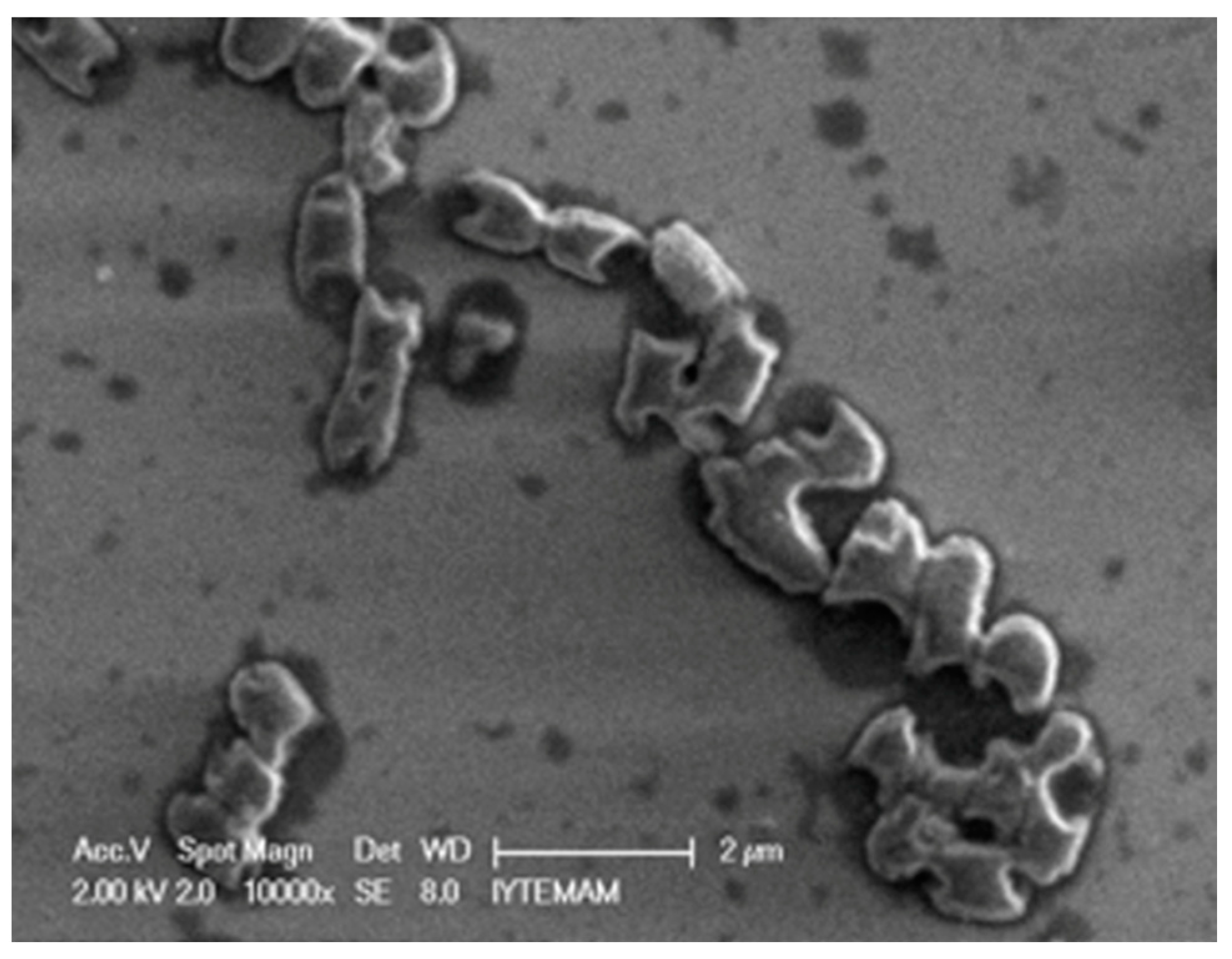
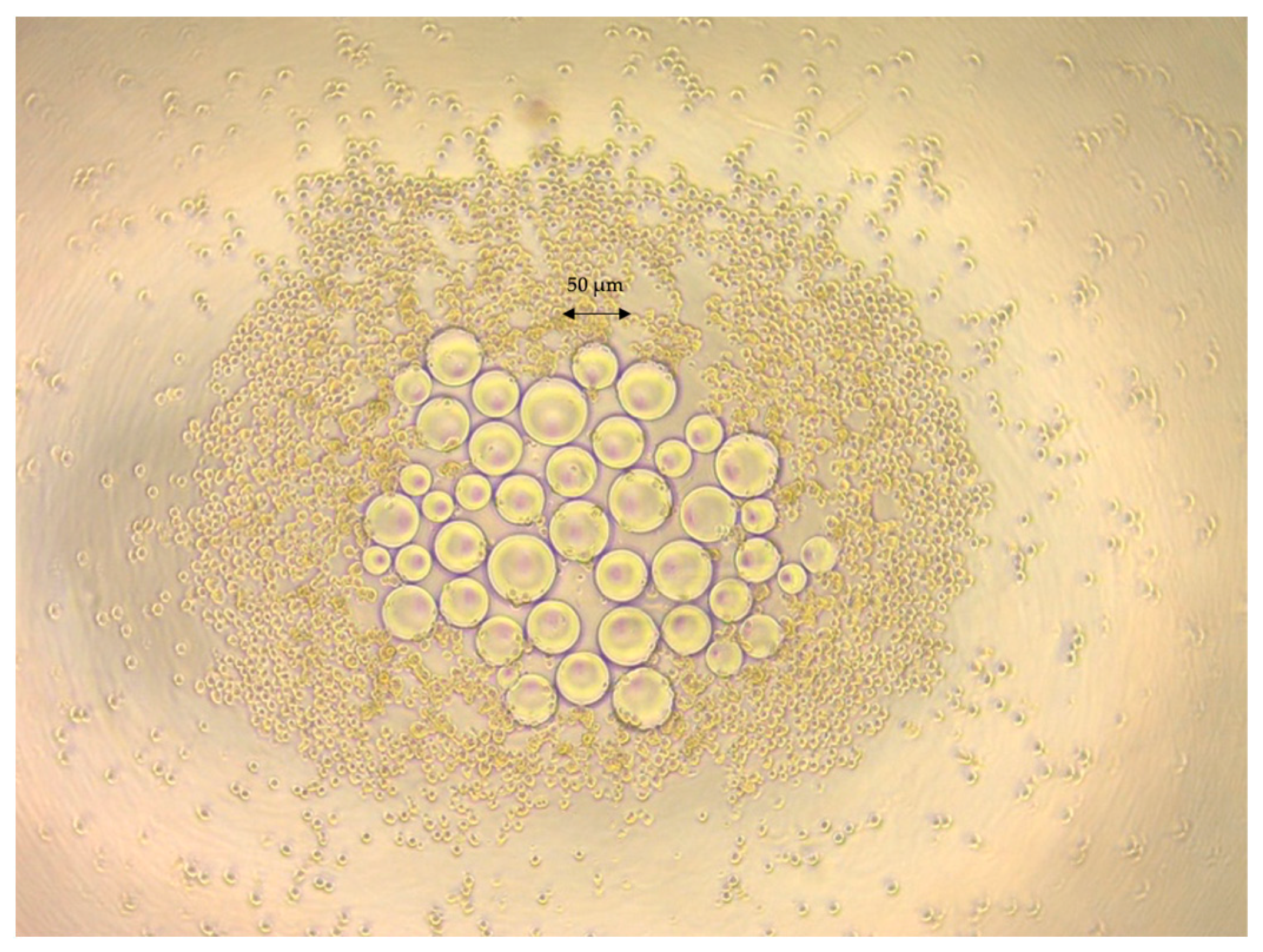
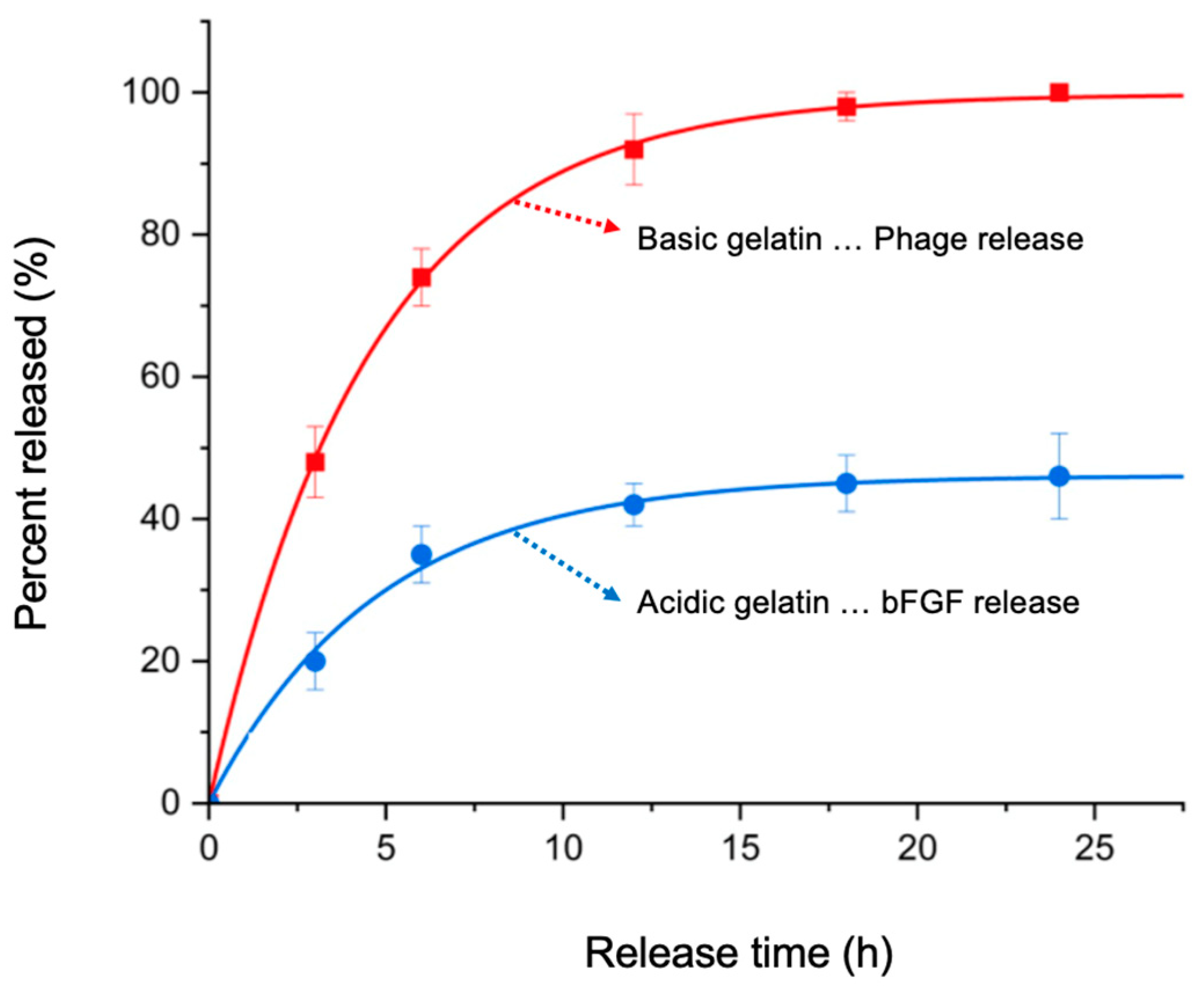
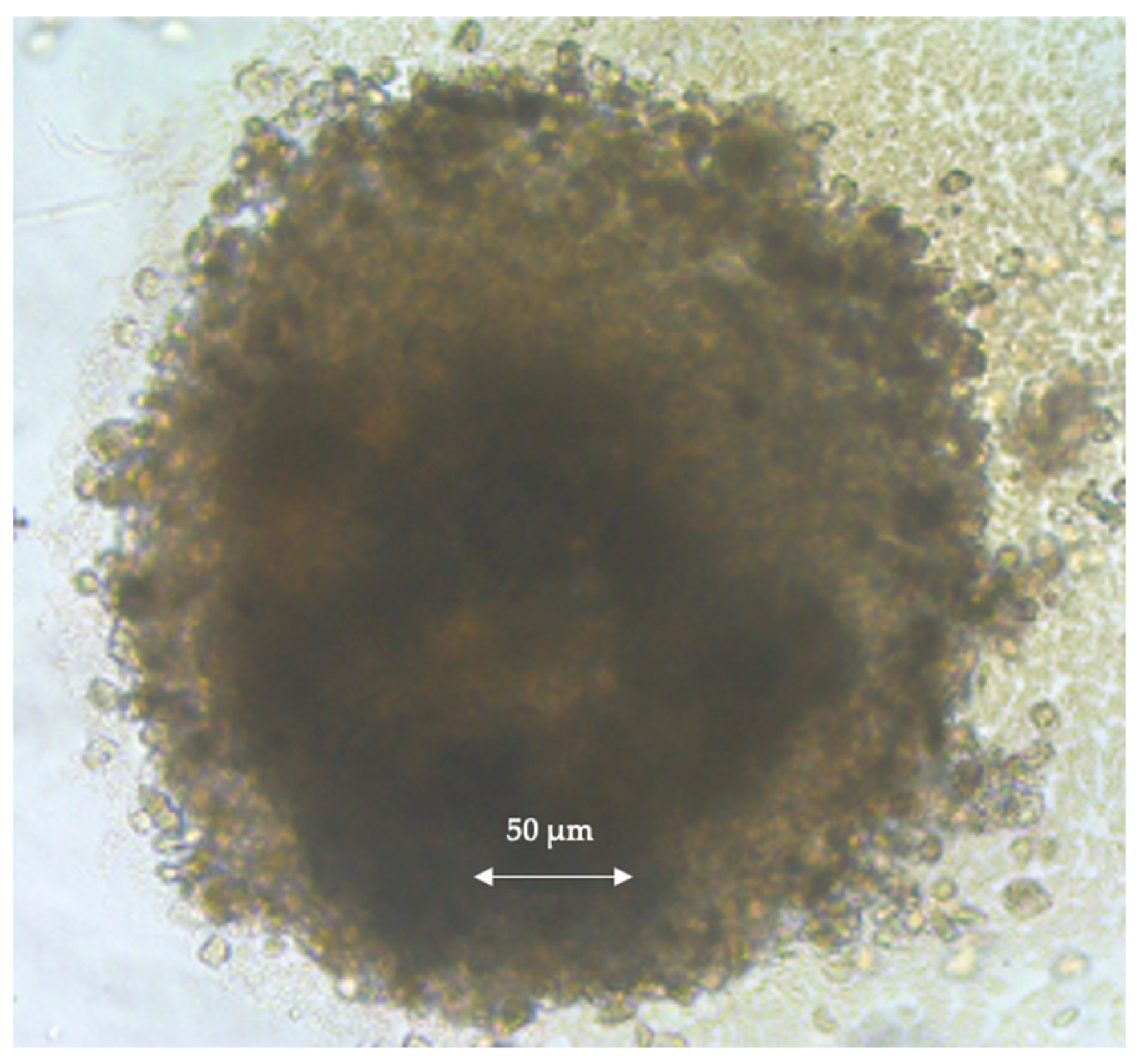
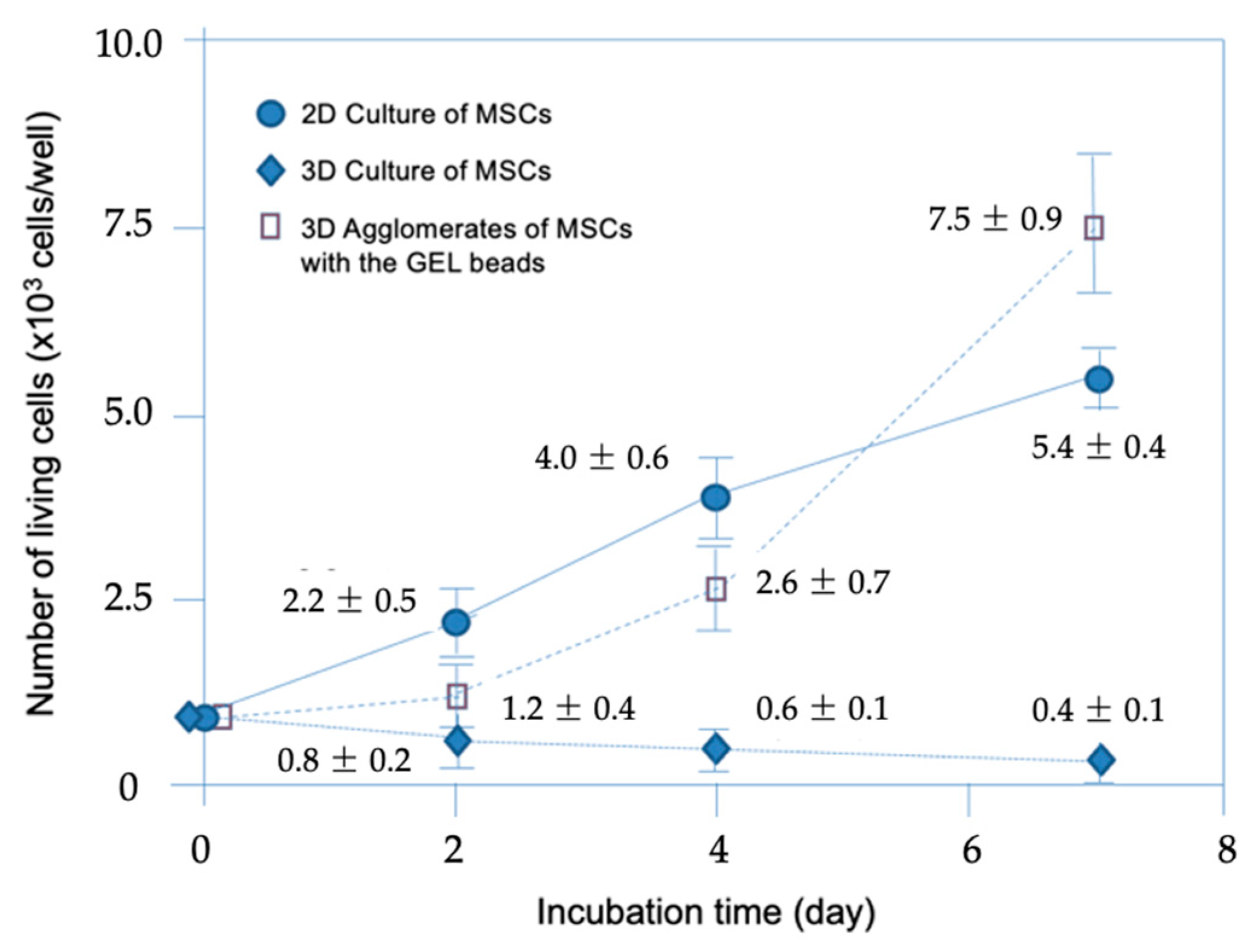
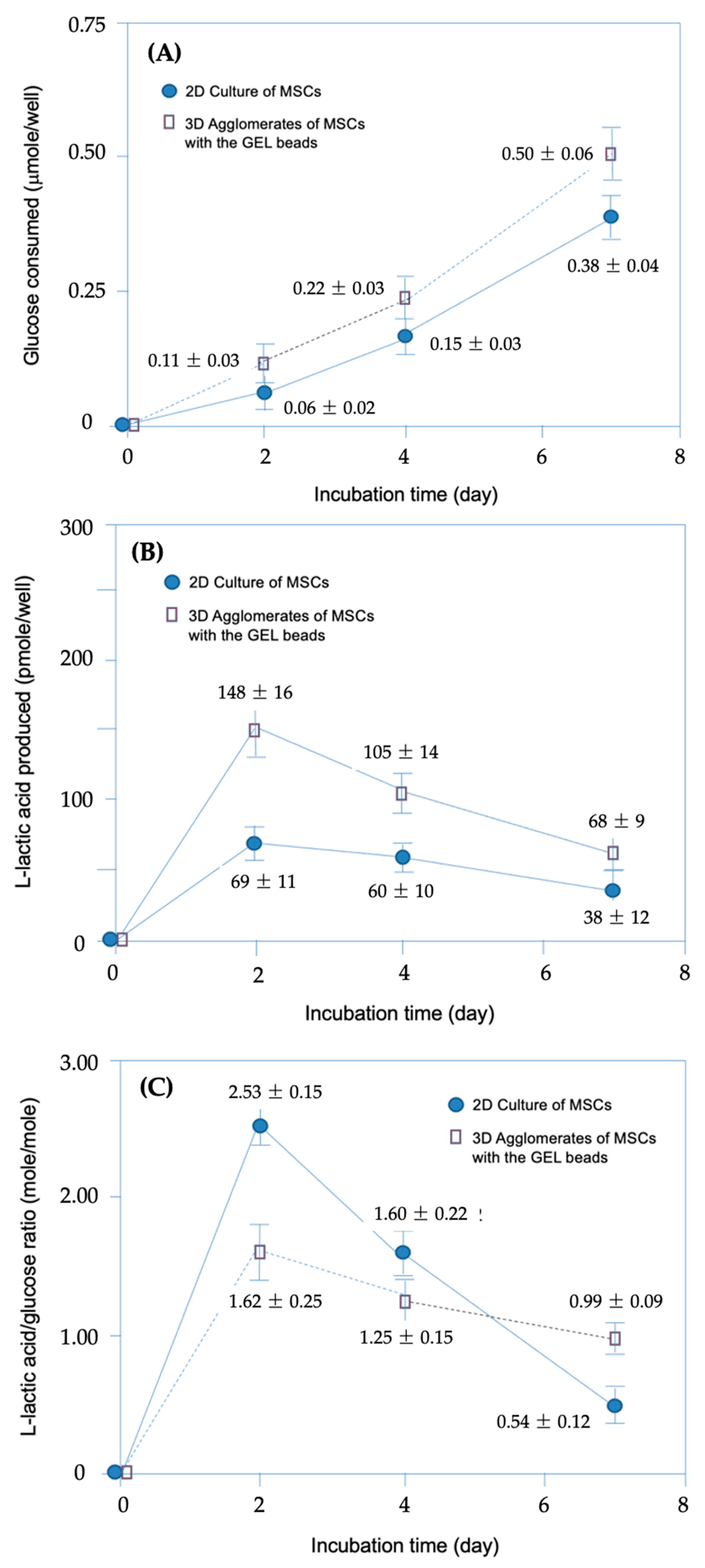
Disclaimer/Publisher’s Note: The statements, opinions and data contained in all publications are solely those of the individual author(s) and contributor(s) and not of MDPI and/or the editor(s). MDPI and/or the editor(s) disclaim responsibility for any injury to people or property resulting from any ideas, methods, instructions or products referred to in the content. |
© 2024 by the authors. Licensee MDPI, Basel, Switzerland. This article is an open access article distributed under the terms and conditions of the Creative Commons Attribution (CC BY) license (https://creativecommons.org/licenses/by/4.0/).
Share and Cite
Moghtader, F.; Tabata, Y.; Karaöz, E. Biohybrids for Combined Therapies of Skin Wounds: Agglomerates of Mesenchymal Stem Cells with Gelatin Hydrogel Beads Delivering Phages and Basic Fibroblast Growth Factor. Gels 2024, 10, 493. https://doi.org/10.3390/gels10080493
Moghtader F, Tabata Y, Karaöz E. Biohybrids for Combined Therapies of Skin Wounds: Agglomerates of Mesenchymal Stem Cells with Gelatin Hydrogel Beads Delivering Phages and Basic Fibroblast Growth Factor. Gels. 2024; 10(8):493. https://doi.org/10.3390/gels10080493
Chicago/Turabian StyleMoghtader, Farzaneh, Yasuhiko Tabata, and Erdal Karaöz. 2024. "Biohybrids for Combined Therapies of Skin Wounds: Agglomerates of Mesenchymal Stem Cells with Gelatin Hydrogel Beads Delivering Phages and Basic Fibroblast Growth Factor" Gels 10, no. 8: 493. https://doi.org/10.3390/gels10080493




